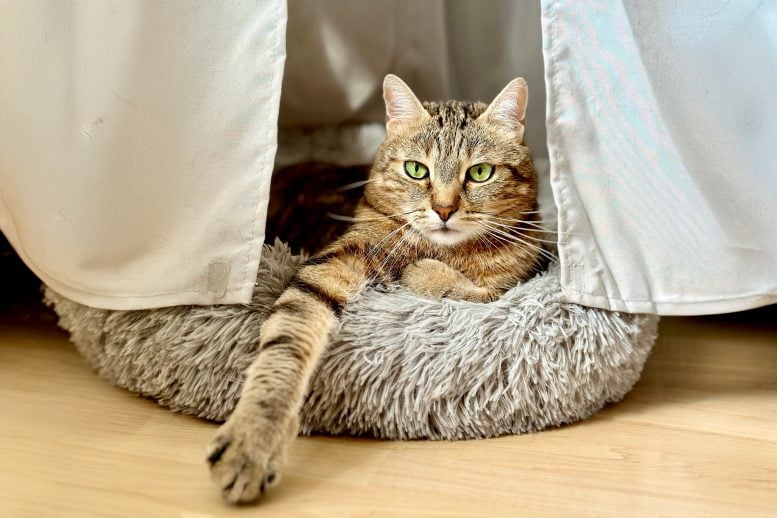Researchers have long studied how consciousness forms in the brain. Professor Ekrem Dere proposes defining conscious phases via behavioral observations and learning curves, using sudden insights to identify conscious processing times. Consciousness varies by task, and studying these phases can reveal brain mechanisms through imaging.
For generations, researchers have pondered the origins and mechanisms of consciousness in the brain. Professor Ekrem Dere from Ruhr University Bochum in Germany suggests a novel approach to studying conscious cognitive information processing. He proposes defining the phases of conscious cognitive processes through behavioral observations and learning curves.
“Learning is often not a gradual process, but takes place in leaps and bounds; you could say that humans and animals experience sudden epiphanies every now and then,” he says. “It’s likely that these experiences are preceded by conscious processes.” Dere outlines his new approach, which might apply to both humans and animals, in a paper published in the journal Frontiers in Behavioral Neuroscience.
Different levels of consciousness
Consciousness is not an all-or-nothing process. “There are different levels of consciousness, depending for example on whether we’re sleeping or writing an email,” says Ekrem Dere from the Mental Health Research and Treatment Center in Bochum, who is also a member of the Sorbonne Université in Paris. “At the upper end of this gradation, so to speak, we find conscious cognitive information processing that is required to deal with a complicated problem.”
Animals can learn a lot. Just like humans, they sometimes experience a eureka moment. This could be valuable for research into consciousness. Credit: Katja Marquard
In order to study the neurobiological correlates of these processes using scientific methods, a human or animal must be presented with an experimental task that can only be solved with conscious cognitive information processing – it’s crucial that there isn’t a preconceived solution. “In the long history of cognitive behavioral psychology, a great many such tasks have been developed,” says Dere. “However, the main difficulty is that a human or animal may not use conscious cognitive information processing throughout the entire processing time.”
Eureka moment is the time stamp
The researcher therefore suggests to use learning curves to narrow down the phases of conscious information processing with regard to their timing. In these curves, performance in a specific task is plotted over time. “Learning performance often doesn’t improve continuously, but rather by leaps or in stages,” explains Dere. This so-called discontinuous learning after insight can serve as a time stamp. “Conscious cognitive information processing must have taken place at this point and presumably also in the seconds leading up to it,” says the psychologist. “Armed with this knowledge, we can use imaging or electrophysiological methods to observe the brain during conscious cognitive information processing by comparing the time periods immediately before the sudden increase in learning with earlier or later points in time during the processing of the task.” This would enable researchers to find out which mechanisms the brain used in which region for conscious information processing.
Reference: “Insights into conscious cognitive information processing” by Ekrem Dere, 15 July 2024, Frontiers in Behavioral Neuroscience.
DOI: 10.3389/fnbeh.2024.1443161
News
Repurposed drugs could calm the immune system’s response to nanomedicine
An international study led by researchers at the University of Colorado Anschutz Medical Campus has identified a promising strategy to enhance the safety of nanomedicines, advanced therapies often used in cancer and vaccine treatments, [...]
Nano-Enhanced Hydrogel Strategies for Cartilage Repair
A recent article in Engineering describes the development of a protein-based nanocomposite hydrogel designed to deliver two therapeutic agents—dexamethasone (Dex) and kartogenin (KGN)—to support cartilage repair. The hydrogel is engineered to modulate immune responses and promote [...]
New Cancer Drug Blocks Tumors Without Debilitating Side Effects
A new drug targets RAS-PI3Kα pathways without harmful side effects. It was developed using high-performance computing and AI. A new cancer drug candidate, developed through a collaboration between Lawrence Livermore National Laboratory (LLNL), BridgeBio Oncology [...]
Scientists Are Pretty Close to Replicating the First Thing That Ever Lived
For 400 million years, a leading hypothesis claims, Earth was an “RNA World,” meaning that life must’ve first replicated from RNA before the arrival of proteins and DNA. Unfortunately, scientists have failed to find [...]
Why ‘Peniaphobia’ Is Exploding Among Young People (And Why We Should Be Concerned)
An insidious illness is taking hold among a growing proportion of young people. Little known to the general public, peniaphobia—the fear of becoming poor—is gaining ground among teens and young adults. Discover the causes [...]
Team finds flawed data in recent study relevant to coronavirus antiviral development
The COVID pandemic illustrated how urgently we need antiviral medications capable of treating coronavirus infections. To aid this effort, researchers quickly homed in on part of SARS-CoV-2's molecular structure known as the NiRAN domain—an [...]
Drug-Coated Neural Implants Reduce Immune Rejection
Summary: A new study shows that coating neural prosthetic implants with the anti-inflammatory drug dexamethasone helps reduce the body’s immune response and scar tissue formation. This strategy enhances the long-term performance and stability of electrodes [...]
Scientists discover cancer-fighting bacteria that ‘soak up’ forever chemicals in the body
A family of healthy bacteria may help 'soak up' toxic forever chemicals in the body, warding off their cancerous effects. Forever chemicals, also known as PFAS (per- and polyfluoroalkyl substances), are toxic chemicals that [...]
Johns Hopkins Researchers Uncover a New Way To Kill Cancer Cells
A new study reveals that blocking ribosomal RNA production rewires cancer cell behavior and could help treat genetically unstable tumors. Researchers at the Johns Hopkins Kimmel Cancer Center and the Department of Radiation Oncology and Molecular [...]
AI matches doctors in mapping lung tumors for radiation therapy
In radiation therapy, precision can save lives. Oncologists must carefully map the size and location of a tumor before delivering high-dose radiation to destroy cancer cells while sparing healthy tissue. But this process, called [...]
Scientists Finally “See” Key Protein That Controls Inflammation
Researchers used advanced microscopy to uncover important protein structures. For the first time, two important protein structures in the human body are being visualized, thanks in part to cutting-edge technology at the University of [...]
AI tool detects 9 types of dementia from a single brain scan
Mayo Clinic researchers have developed a new artificial intelligence (AI) tool that helps clinicians identify brain activity patterns linked to nine types of dementia, including Alzheimer's disease, using a single, widely available scan—a transformative [...]
Is plastic packaging putting more than just food on your plate?
New research reveals that common food packaging and utensils can shed microscopic plastics into our food, prompting urgent calls for stricter testing and updated regulations to protect public health. Beyond microplastics: The analysis intentionally [...]
Aging Spreads Through the Bloodstream
Summary: New research reveals that aging isn’t just a local cellular process—it can spread throughout the body via the bloodstream. A redox-sensitive protein called ReHMGB1, secreted by senescent cells, was found to trigger aging features [...]
AI and nanomedicine find rare biomarkers for prostrate cancer and atherosclerosis
Imagine a stadium packed with 75,000 fans, all wearing green and white jerseys—except one person in a solid green shirt. Finding that person would be tough. That's how hard it is for scientists to [...]
Are Pesticides Breeding the Next Pandemic? Experts Warn of Fungal Superbugs
Fungicides used in agriculture have been linked to an increase in resistance to antifungal drugs in both humans and animals. Fungal infections are on the rise, and two UC Davis infectious disease experts, Dr. George Thompson [...]






















